► Honda’s hydrogen fuel-cell production car
► Now on long-term public trials in Europe
► Seats five, quoted range tops 400 miles
You already know the chicken-and-egg paradox of hydrogen fuel-cell electric cars – the refuelling infrastructure isn’t there yet, but nor will it be until there are cars on the road to justify it.
The Honda Clarity Fuel Cell is one of the small band of pioneer hydrogen production cars attempting to get the ball rolling, along with the Toyota Mirai and Hyundai’s ix35 Fuel Cell.
This isn’t the first time we’ve driven the Honda Clarity Fuel Cell – you might remember CAR magazine editor Ben Miller tested it in Japan at the tail-end of 2015 – but it is the first time we’ve driven it in Europe.
That’s significant, because the Clarity Fuel Cell has just begun long-term test trials with members of the public both in the UK and in Denmark, where we’ve just tested it.
So can I go out and buy a Honda Clarity?
Not yet. Or not exactly, anyway. Honda currently has an allocation of three cars for the UK, which will be temporarily ‘owned’ and driven by members of the public as part of the HyFive project, a European initiative to push the development of fuel cell vehicles.
In 2018 a further three cars will arrive in the UK as part of the same programme. The ‘customers’ will need to pay for their own hydrogen when they fill the cars up (a process I’ll explain in greater detail shortly), and agree for data on the type of use to which they subject the cars to be collected by Honda to help future fuel-cell development (although that doesn’t include any privacy-infringing location information).
Members of the public can lease the new Clarity in the States and in Japan, but not buy it outright. Either way, Honda won’t make a profit on the Clarity – the car’s considerable manufacturing costs are all part of its on-going r&d outlay for hydrogen development.
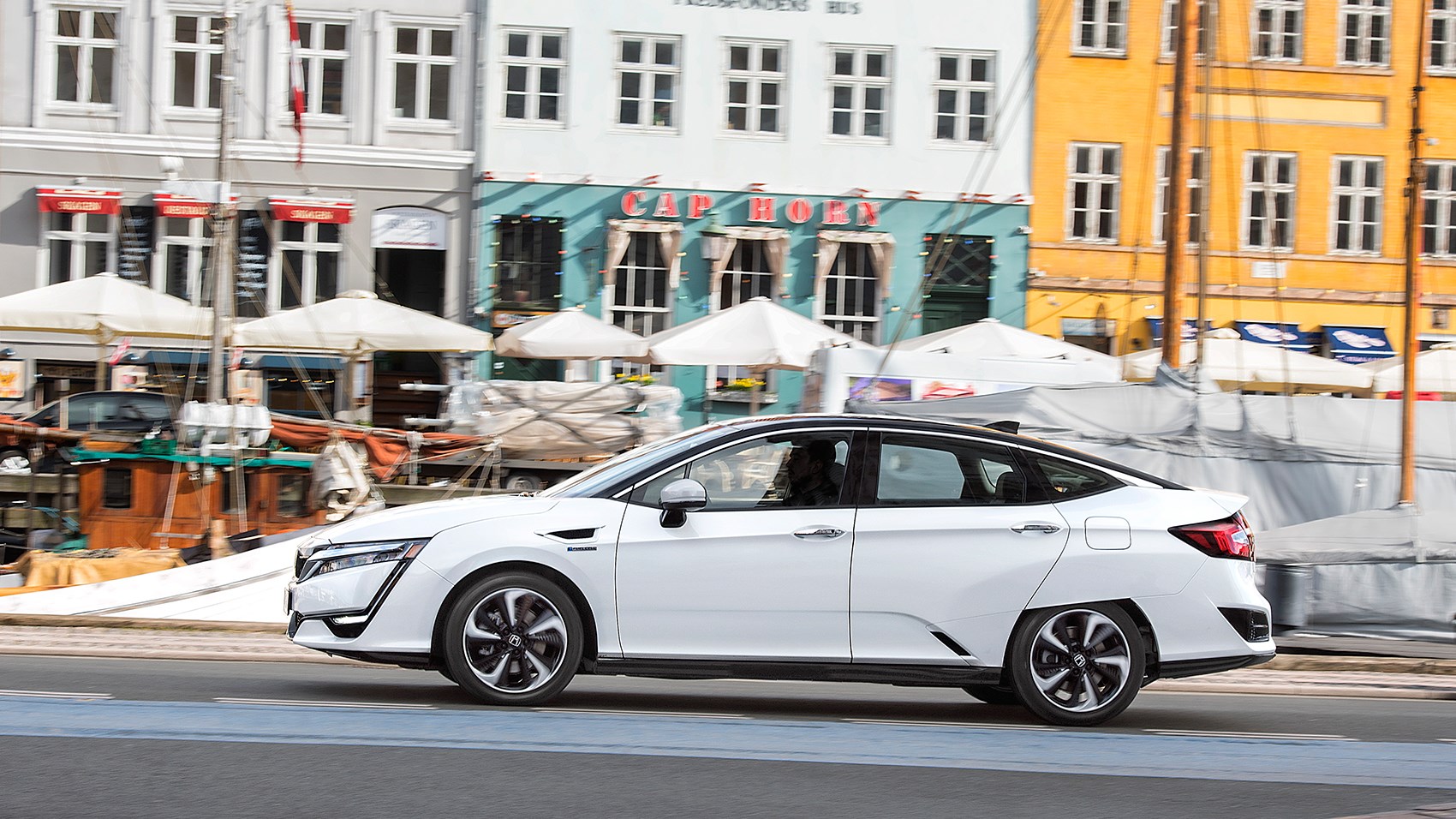
Hydrogen fuel cell Hondas – we’ve been here before, haven’t we?
Honda’s been working on them since the late 1980s, with its first fully functioning fuel cell car the ‘V0’ in 1998 – described as effectively ‘a chemical lab on wheels’ by the Clarity’s chief engineer Kyoshi Shimizu.
In 1999 the FCX-V1 arrived, a more well-rounded creation – if only figuratively speaking, with high-sided minivan styling. As fuel cell stack powertrains have evolved and become more compact, so Honda’s hydrogen cars have shrunk in height, progressing through V2, V3 and V4 to 2003’s FCX, leased to individual customers for the first time in 2005.
The biggest step forward was 2008’s FCX Clarity – a sleek saloon leased to individuals in the USA and Japan and tested by CAR’s Ben Oliver in 2008 – read his review here.
Here endeth the history lesson with the latest, all-new step we’re driving here – the Clarity Fuel Cell (now minus the FCX label). It’s shaped like a conventional five-door saloon with a hatchback tailgate, albeit a bloomin’ big one. At nearly five metres in length, this is not a compact car.
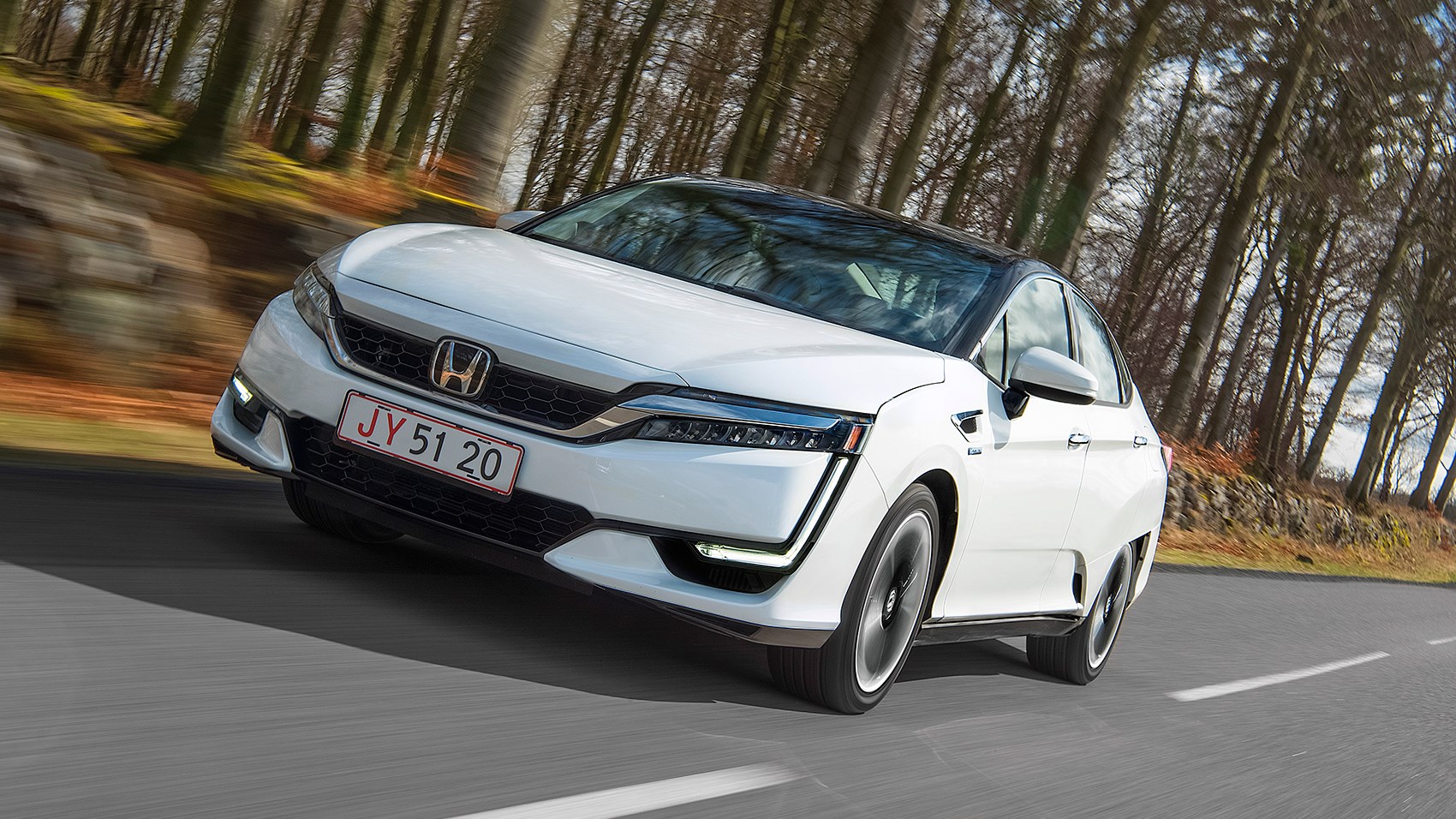
New Honda Clarity Fuel Cell: technical highlights
One of the headline advances is that Honda has managed to squeeze the main fuel-cell powertrain components together under the bonnet, including the fuel-cell stack, enabling the Clarity to fit five passengers on board for the first time.
That’s been achieved by turning the drive unit sideways and downsizing the fuel-cell stack to be a third smaller than the centrally mounted one in the previous FCX Clarity, yet slightly more powerful. Fitting it ahead of the dashboard gave the engineering team more than a few headaches to overcome, not least in terms of impact resistance for crash protection.
With the stack positioned on top of the motor, gearbox and power control unit, the whole caboodle takes up about the same amount of space as Honda’s 3.5-litre V6 petrol engine and gearbox.
It’s potentially an exciting period of time for fuel-cell cars as investment in them increases, with big packaging and engineering steps in a short space of time – like going back to earlier times in combustion engine design.
The chassis, a brand-new platform specific to the car (but also designed with the potential to take a battery-electric powertrain too – don’t rule out a BEV Clarity model in the future), uses a clever and costly mix of extremely high-tensile steel (enabling slimmer stamping than typical production cars), plenty of aluminium, and composite sections.
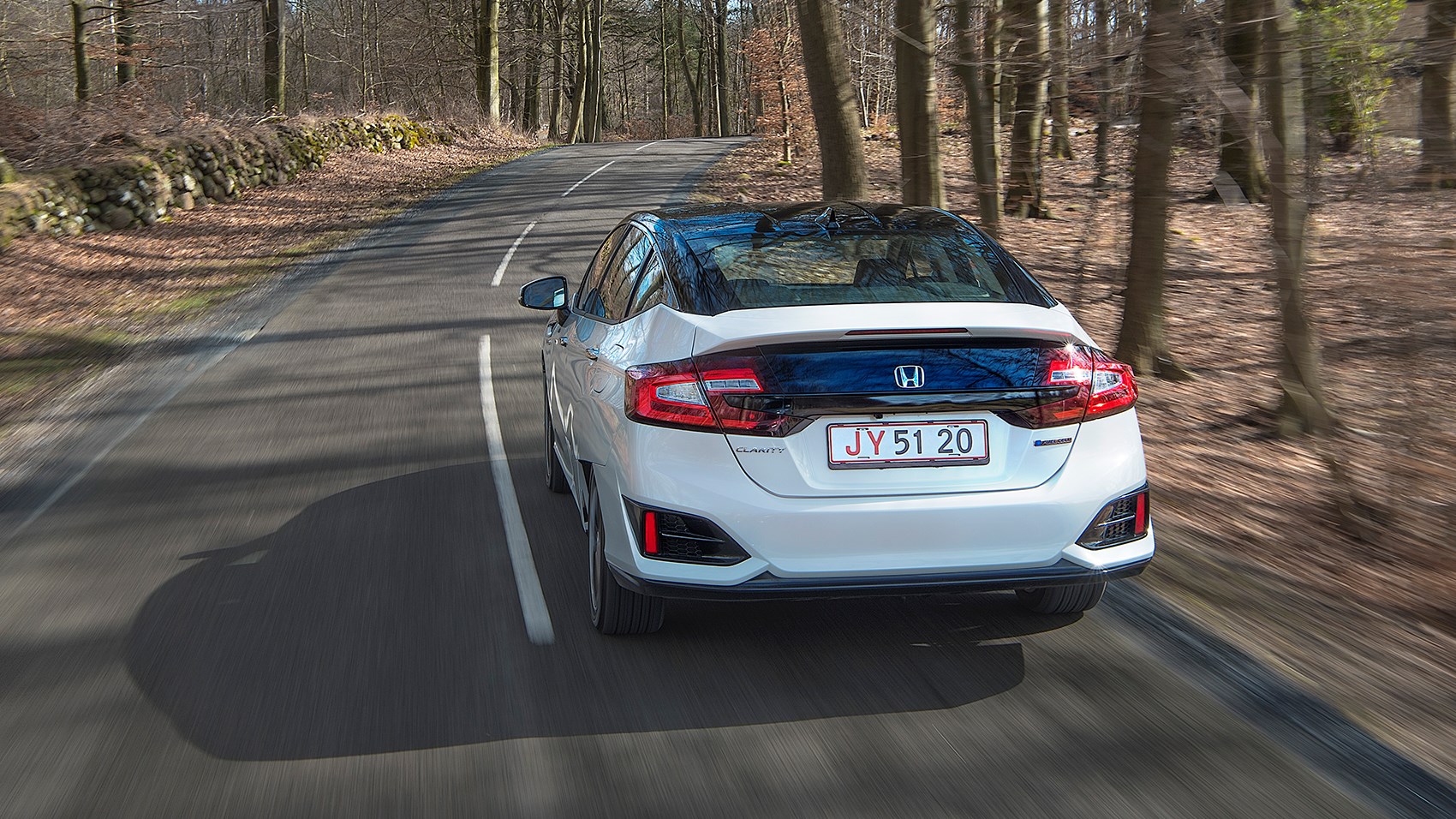
Where does the hydrogen go?
There are two tanks, a 117-litre one under the boot and a 24-litre one under the back seats.
Overall tank volume is smaller than the previous FCX Clarity’s, but the hydrogen’s stored at twice the pressure (more than 10,000psi), enabling 40% more of the stuff to squeeze into the tanks.
The boot is still a decent, if awkwardly shaped sized, theoretically big enough for three golf bags if you give the tailgate a good slam.
And how far will it take the car?
Based on its own internal tests, Honda quotes a driving range of approximately 403 miles from a full tank of hydrogen under industry-standard NEDC (New European Driving Cycle) conditions.
Where can I fill it up?
In the UK, there are currently six publicly accessible hydrogen stations, most notably a Shell station at Cobham services on the M25, and another at Heathrow. More are on the way, but it’s pretty safe to say your best chance of spotting a Honda Clarity being driven by a member of the public in the near future involves being somewhere near greater London. By 2022, when the Clarity will be rolled out in the UK in greater numbers, the number of H2 stations is expected to have multiplied.
For context, in Japan there are currently around 90 stations mostly centred around four major cities including Tokyo. But they operate on a strictly 9-5 basis, are closed during holidays, and don’t allow unsupervised refuelling – yet. The USA does, and its H2 stations (the most usable network of which is in California for now) operate 24/7.
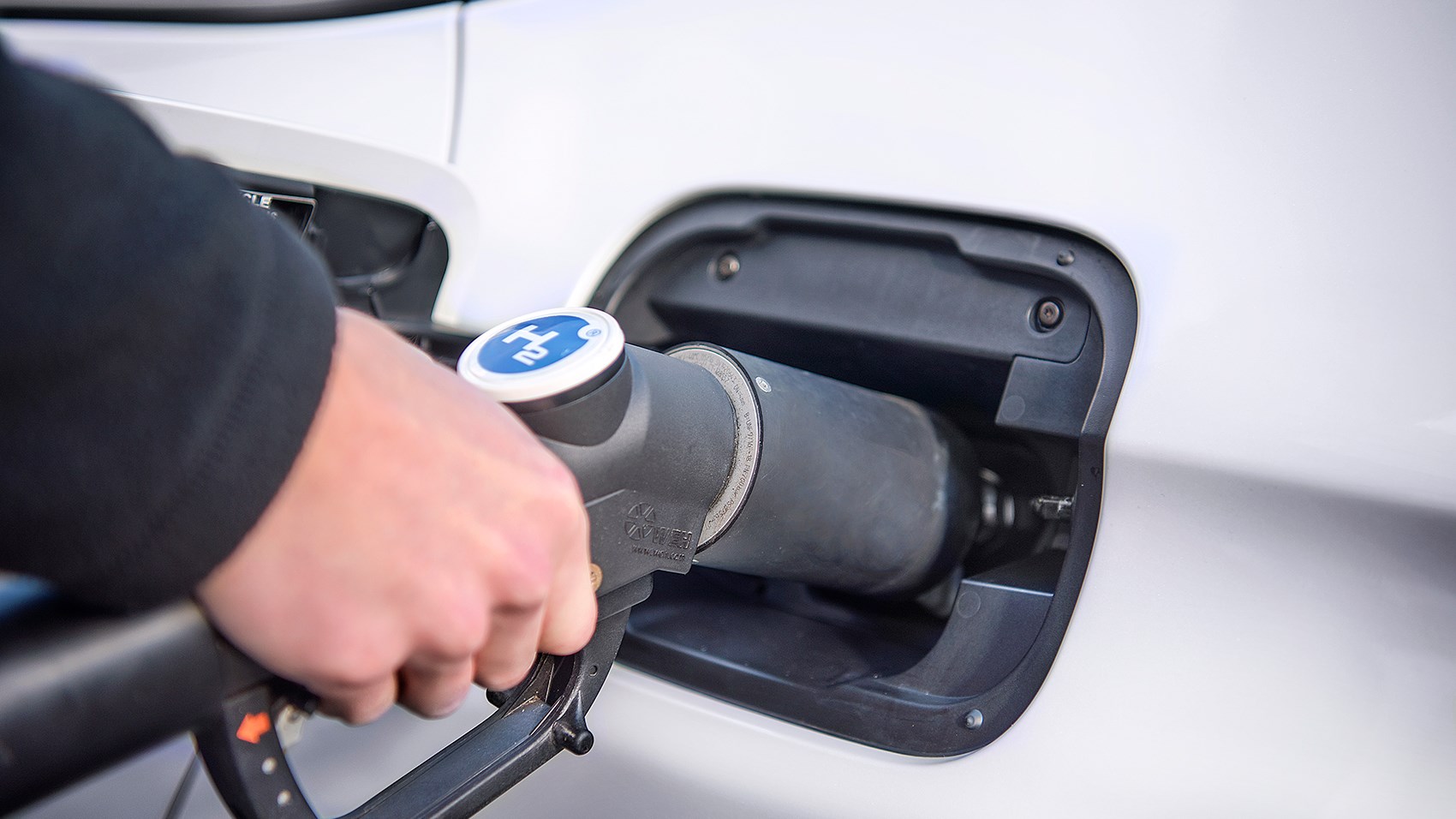
What’s it like filling up with hydrogen?
Based on our experience at a station in Copenhagen, entirely normal. Hydrogen exits the frostily nozzled pump at a very cold temperature, but there’s no need to wear gloves. A readout tells you to what percentage the tank is full, and it takes no longer and feels no more or less tedious than pumping diesel or petrol into a car.
In this case we didn’t actually fill the tank past 70% because shortly before we arrived, three Hyundai ix35 Fuel Cells had turned up and tanked up. You wait for one hydrogen-fuelled production car to come along, and…
Incidentally, such is the energy density of hydrogen compared to petrol that a full load of H2 in the Clarity weighs only 5kg.
Currently, Clarity drivers will pay about £85 for a full tank (or tanks in this car’s case) of hydrogen. That’s a figure more or less plucked out of the air for now, primarily because the nascent hydrogen fuelling industry doesn’t yet have an established commercial framework for a public pricing system.
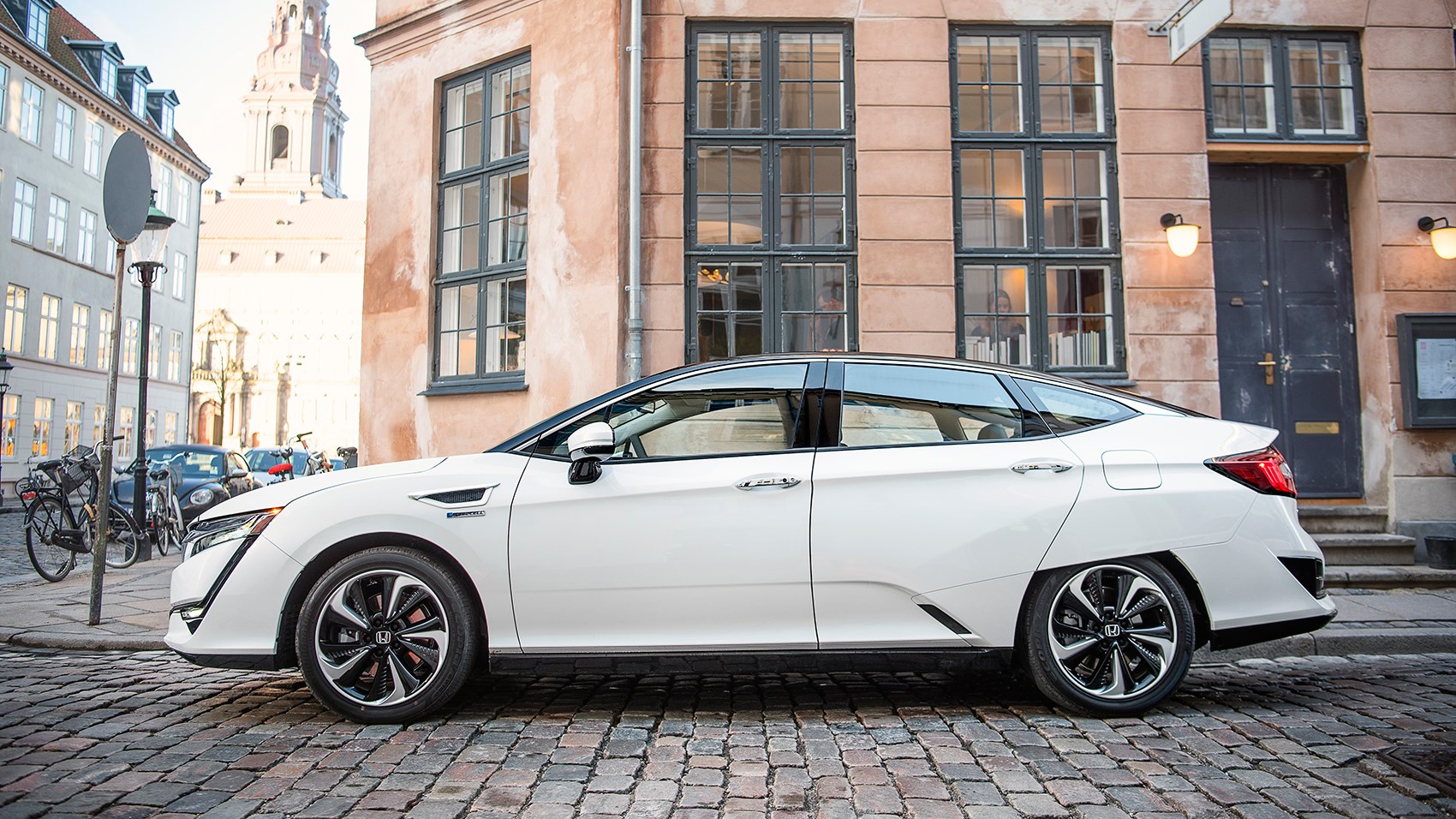
How does the Honda Clarity Fuel Cell, y’know, work?
Put simply in a basic nutshell:
Hydrogen is fed from the tanks into the stack of fuel cells (358 of them, if you’re interested), whereupon it’s divorced into protons and electrons, which then get together with oxygen to create electricity (and water vapour as a by-product). Said electricity then powers the electric motor driving the front wheels.
A lithium-ion battery under the floor between the front seats stores some of the electricity generated from the fuel stack, and can provide extra energy when the driver demands more than the fuel stack might be ready to give, such as a particularly aggressive start or accelerating uphill.
So it’s also a hybrid; at a cruise, the fuel cell powers the motor by itself, under acceleration the battery lends a hand – and gets recharged by regenerated energy under braking, or by the fuel cell when the car’s at idle.
Honda says the latest Clarity’s battery has a 50% greater output than its predecessor.
Does it feel weird to drive?
Far from it. Just like any other EV car, with only the faintest of whooshes and whines from the powertrain.
There are two driving modes, Normal and Sport, accessed by a prod of a button ahead of the gear selector panel. The latter offers a perkier accelerator pedal map, and more pronounced regenerative braking effect when lifting said pedal.
Either way, this is not a particularly quick car, with acceleration more a gentle building of speed than the hairtrigger response of some EVs. The Honda Clarity is more of a waftomatic cruiser, and none the worse for it. It’s a supremely relaxing car to drive, with very little in the way of noise and a well-cushioned ride from its aluminium suspension (MacPherson strut front, multi-link rear).
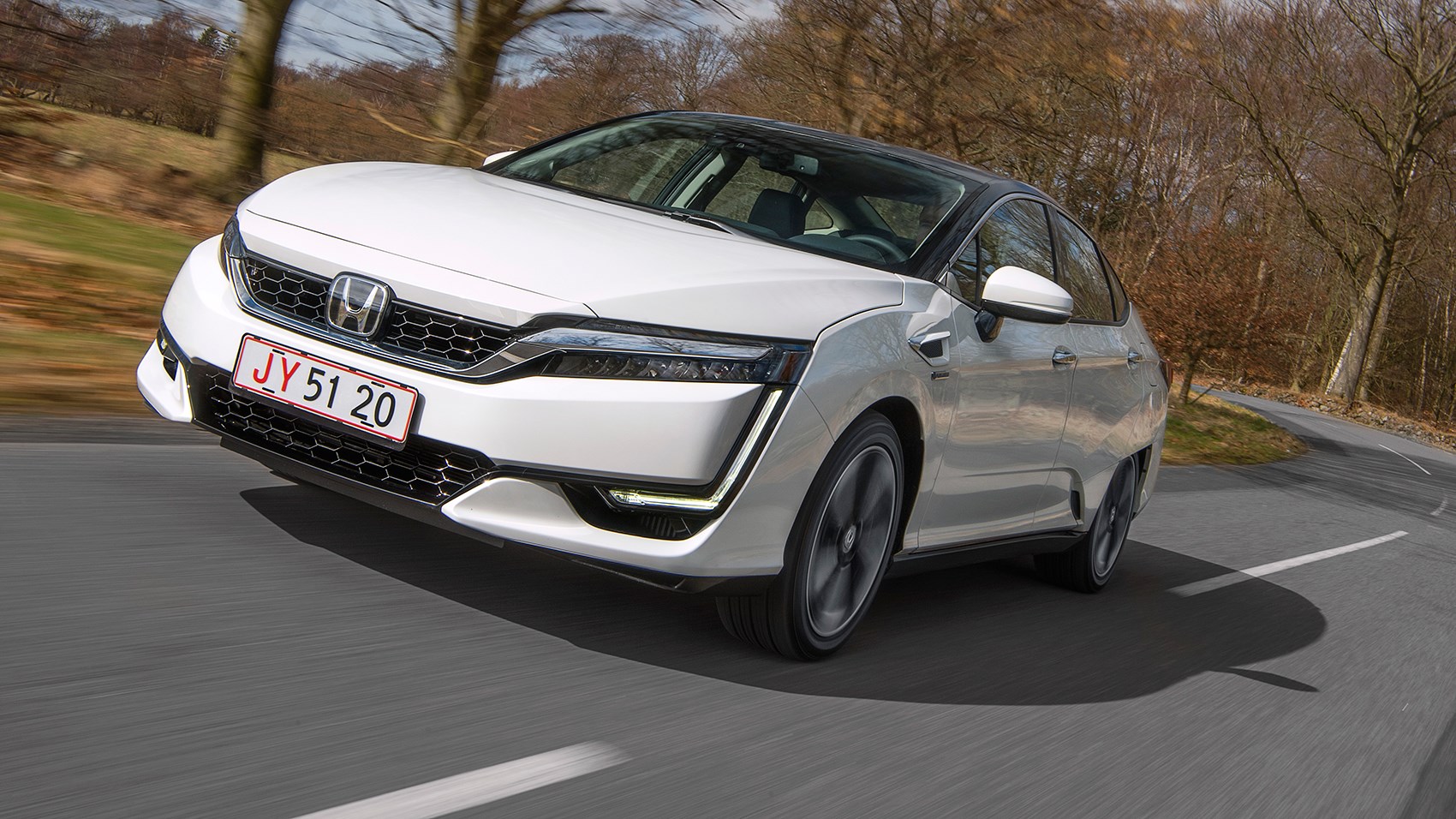
Although you’re always aware of its considerable bulk, it’s not a particularly awkward car to manoeuvre, and a standard-fit camera on the underside of the passenger door mirror displays a video of the blind spot on the dash’s touchscreen – a useful feature born out of regulations in the USA.
Feel through the brake pedal – sometimes a bit hit and miss in EVs with regenerative tech – is admirably progressive.
If it feels normal to drive, why does it look so weird?
Ah come on, eye, beholder… Much of the unusual styling is down to a quest to reduce aerodynamic drag, with ‘air curtains’ around the wheelarches to reduce turbulence around the wheels.
It’s perhaps a shame the shape doesn’t have a little more in common with the 2008 FCX, a rather alluring single volume teardrop of a car, but the new Clarity’s larger body is more practical.
When we pull over for a break, mist from warm water vapour expelled through the body’s vents rises theatrically – this car’s so sci-fi it’s as if it comes with its own dry ice display.
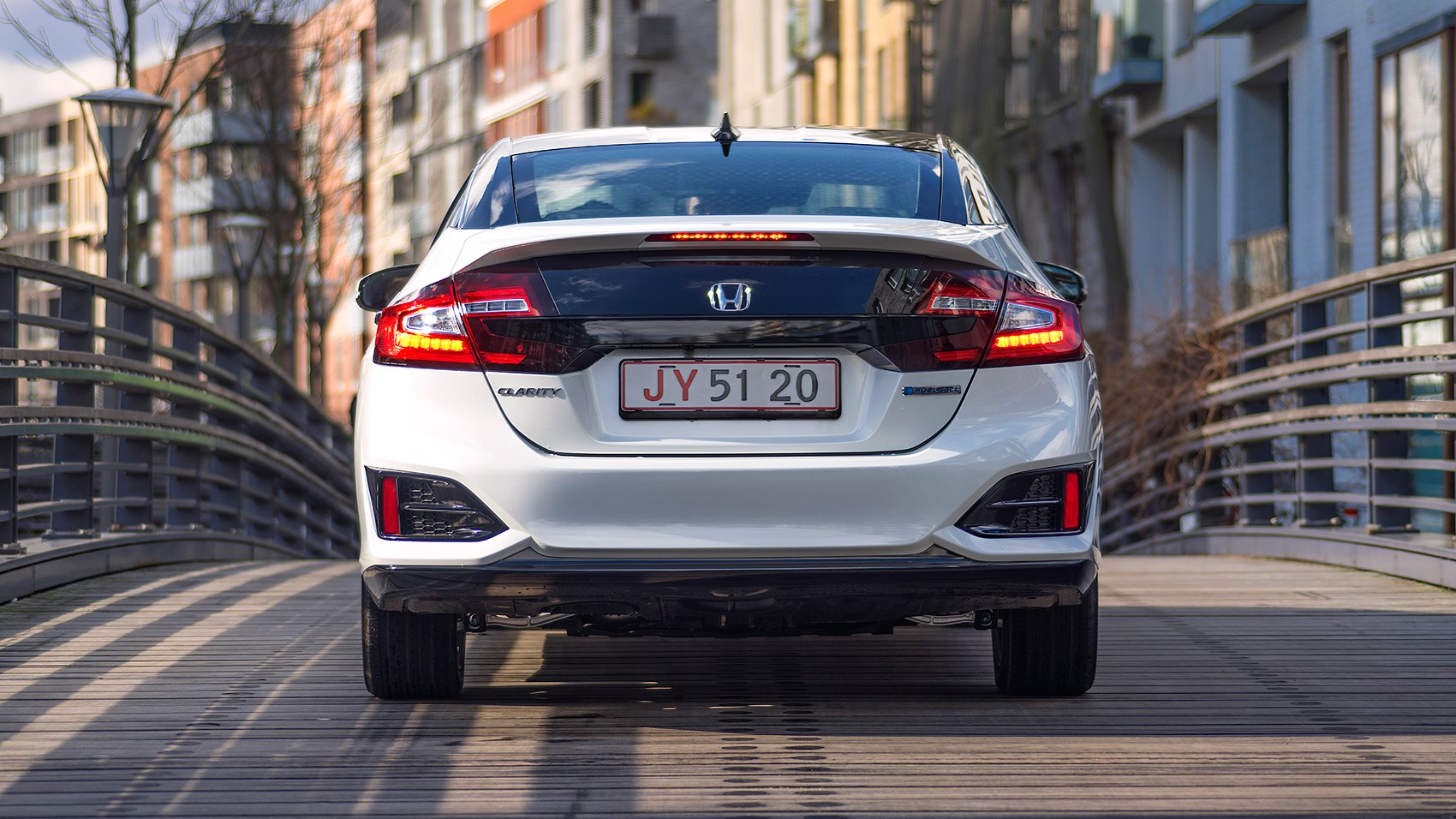
When will members of the public be able to buy a hydrogen Honda Clarity outright rather than lease one?
In the UK, sales are pencilled in for 2022, when the second-gen version arrives.
It’s currently lease-only in Japan and the USA, but Honda plans to move towards a purchase programme towards end of next year in both countries.
Chief engineer Kyoshi Shimizu says, ‘we want to show this type of fuel cell vehicle is viable in Europe and increase people’s awareness of this type of technology, [and] to reassure that it’s not dangerous.
‘European trials gain more data as to how many hydrogen stations need to be built and where. Europe [includes] many countries and different [types of] uses [for cars] – for example, in Germany very high [driving] speeds are needed.
‘We want to consider the next-generation Clarity launch in Europe.’
Verdict
As a car, the Honda Clarity Fuel Cell feels more than ready. It’s quiet, comfortable and supremely relaxing to drive, and I would quite happily do so for great distances were there guaranteed places to fill it up. Quality feels top-notch, but so it should; each one costs Honda a considerable amount of money to make, which itself is one of the hydrogen car species’ problems – economies of scale can’t yet be applied.
The considerable pros and challenging cons of hydrogen as an energy carrier are well documented. But if it does turn out to be a viable solution for energising vehicles in the medium-term future, the Clarity suggests we can look forward to a future that continues to be full of accomplished, inventively engineered cars.
More Honda reviews